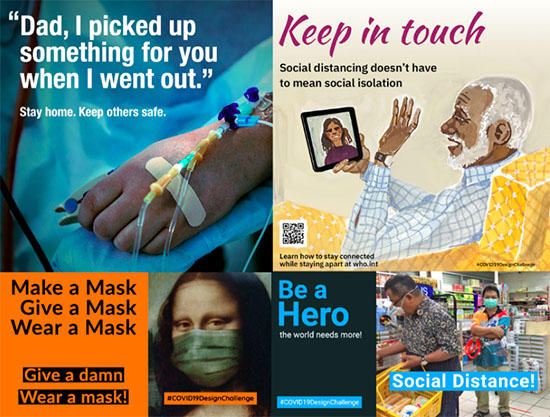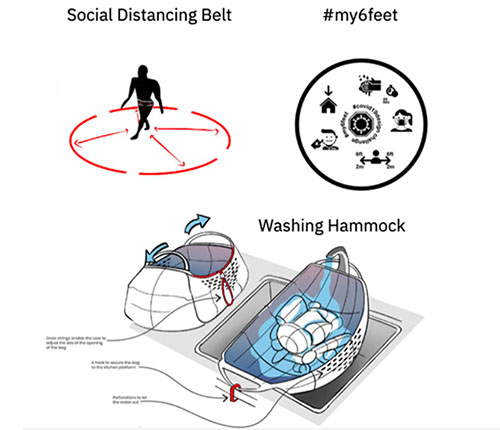IBM and Coronavirus stories
Mobilizing Designers to Tackle the Pandemic’s Challenges
By Karel Vredenburg
Design is powerful. It can motivate people to act. It can inspire products and services that simplify and enrich our lives, create whole new experiences—and much more.
Designers spend their days practicing their craft in service of the organizations for which they work. However, I’ve always felt that the global community of designers has the power to do much more in addition to our day jobs. Collectively, we can help address some of the biggest challenges in the world. I shared this view during a keynote address last August at the Design for America Summit, where I issued a call for designers to address the world’s most significant problems using a bold, global and personal approach.
Since then the world has changed. We were all consumed by the COVID-19 global pandemic. Suddenly, we had a major challenge that designers could impact.

Entries for the COVID-19 Design Challenge included communications campaigns like these.
In conversations with the President of the World Design Organization (WDO), Srini Srinivasan, who independently had a similar perspective, and the Executive Director of Design for America (DFA), Rebecca Breuer, we decided to join forces and bring our communities together to launch the COVID-19 Design Challenge.
We reached out to our communities and asked for “the most important and urgent challenges that you think designers could help to address regarding the coronavirus crisis.” We received more than 180 challenges, which we clustered and voted on to determine which were the most urgent and potentially impactful. Those became the focus of the design challenge.

Ideas for physical devices submitted for the Design Challenge included a social distancing belt,
a sticker to remind people to engage in safe behavior and a hammock for washing produce.
Mobilizing Designers From WDO, DFA and IBM
We then asked for volunteers from our three communities. Interest was so overwhelming that we had to limit the number of participants to make it manageable.
We ended up with 255 designers from 33 countries, spanning 17 time zones. To co-lead the teams, we assigned leaders from the WDO, DFA and IBM, as well as IBM designers with an Enterprise Design Thinking Coach badge. Each of the teams carried out rapid user research, iteratively ideated solutions, conducted prototyping and gathered feedback. All of this took place while participants worked remotely from home, using the remote version of Enterprise Design Thinking.
After the three-week-long challenge, the project outcomes were featured on our covid19designchallenge.org website. The site also includes the full list of contributors.
Teams worked on a total of 30 projects. Examples include:
• Communication campaigns designed to inform and motivate people to socially distance and practice effective hygiene.
• Mobile device apps designed to make social distancing easier, thank frontline workers, optimize remote education and more.
• Physical devices including a social distancing belt, a hammock for washing produce, and stickers reminding people to engage in safe behavior.
• Personal Protective Equipment (PPE) for frontline workers and others, that looks beautiful and does not touch or irritate the skin like a mask.
• Simple Markings that make it possible to place a discreet symbol on almost anything, from PPE to a window, to subtly signal to others the existence of domestic violence
To see the rest of the ideas generated by this challenge, please check out our website. If you’re inspired by what you see, I hope that you’ll share the social media assets that some of our teams generated and consider partnering with us on those projects that require further development.
Karel Vredenburg is Director of IBM Design Leadership & Academic Programs.
A version of this story first appeard on Medium